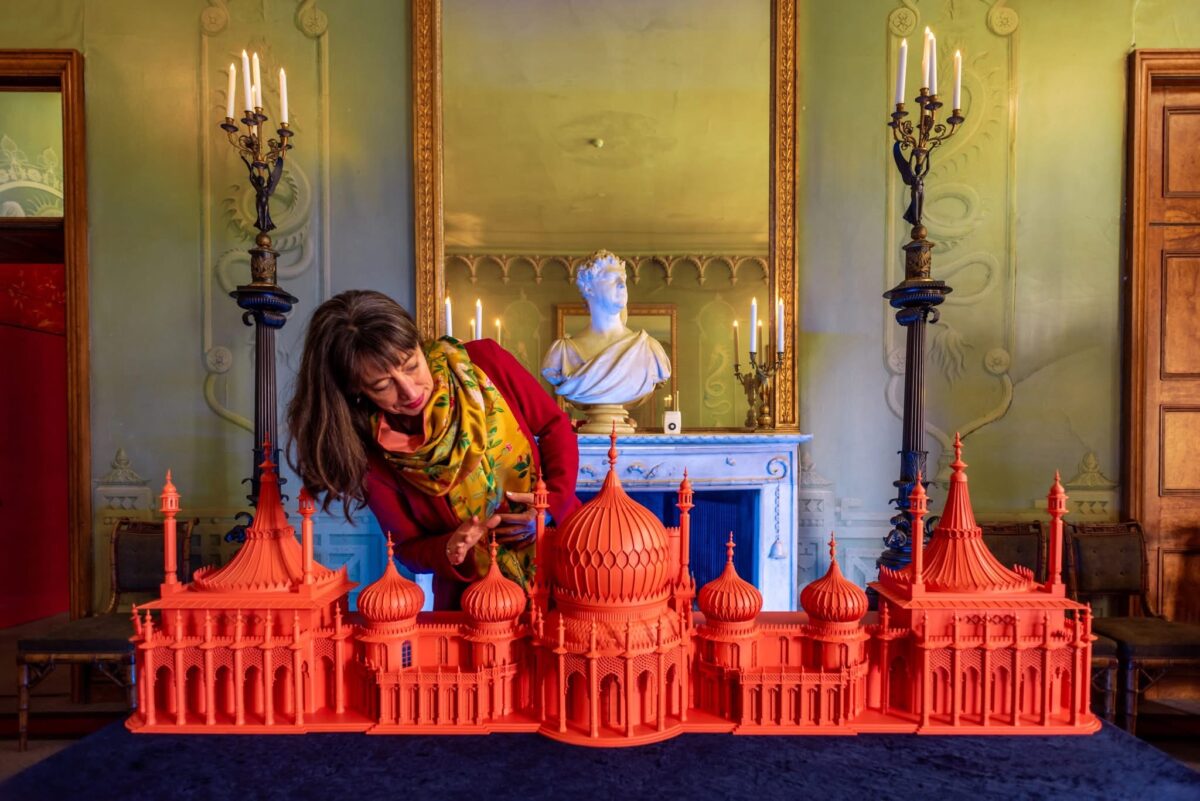Exclusive Q&A with the Paint Detective: Patrick Baty at the Royal Pavilion
On 31 May, renowned historian Patrick Baty—better known as The Paint Detective—joins Dr. Alexandra Loske at the Royal Pavilion for Colour Conversations, a special evening uncovering the stories that lie beneath the surface of historic buildings.
To mark the occasion, we sat down with Patrick for an exclusive interview exploring his lifelong fascination with architectural paint, surprising case studies, and his expert insight into the Royal Pavilion’s colour history.

1. What inspired your lifelong fascination with architectural paint and colour?
I grew up surrounded by paintings—mainly by my great-grandparents, the Hove-born Robert Polhill Bevan and his Polish wife Stanisława de Karłowska. Bevan has been described as “perhaps the first Englishman to use pure colour in the 20th Century.”
I’ve always been interested in architecture, and when I began working with my father at Papers and Paints over 40 years ago, I started to explore how colour was historically used to decorate buildings. That’s where it all began.
2. What makes the Royal Pavilion unique from a colour history perspective?
The Royal Pavilion is renowned for its lavish and exotic interiors—especially its bold use of colour and fusion of Eastern and Western design elements. For anyone studying the Crace family of decorators, Brighton is particularly significant.

3. Can you share a favourite “paint detective” story?
A memorable moment was when I traced a pair of doors in a Devon farmhouse back to the Prince Regent’s bedchamber in the now-demolished Carlton House in London—purely by analysing paint layers.
In another case, I identified an 18th-century doorcase in a salvage yard as having been stolen from a house in Watford, again just through paint analysis.
4. What’s one surprising thing people might learn at the Colour Conversations talk?
That paint is not boring! Examining historic layers can tell us an extraordinary amount—about a building’s history, the ambitions of its owners, and even changes in social class or fashion.

5. Could you tell us a bit about your collaboration with Alexandra Loske—especially the dragon at Kew?
Alexandra and I met while advising Historic Royal Palaces on the installation of dragons on the Pagoda at Kew. To our surprise, we found ourselves on the so-called ‘Dragon Committee’—apparently the leading panel of dragon experts! My role focused on colour and technical painting aspects. We’ve stayed in touch ever since.
6. Why do you think colour evokes such strong emotions in architecture?
Colour is often the first thing you notice about a building. It can shift its perceived status, change the way proportions read, or dramatically influence how it fits within its surroundings. There’s an unspoken language to colour in architecture—sometimes respectful, sometimes deliberately provocative.

7. You’ve worked on everything from Tudor gardens to Tower Bridge—do you still have a dream project?
I love a challenge and unusual commissions always excite me. After decades in the field, I think I’ve ticked most of the boxes on any dream list—but I’m always open to something new.
8. What would you say to someone who thinks paint is “just paint”?
(See question 4!) Paint, on its own, may not seem thrilling—but the story behind each layer can be rich and revealing. It’s a tool for unearthing the past in ways few people expect.
—
Don’t Miss the Event
Colour Conversations: Alexandra Loske and Patrick Baty
🗓 31 May 2025 | 📍 The Royal Pavilion
Discover why paint is never “just paint”—and see the Royal Pavilion in a whole new light.
Book your tickets here →Colour Conversations: Patrick Baty – The Paint Detective